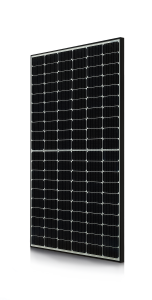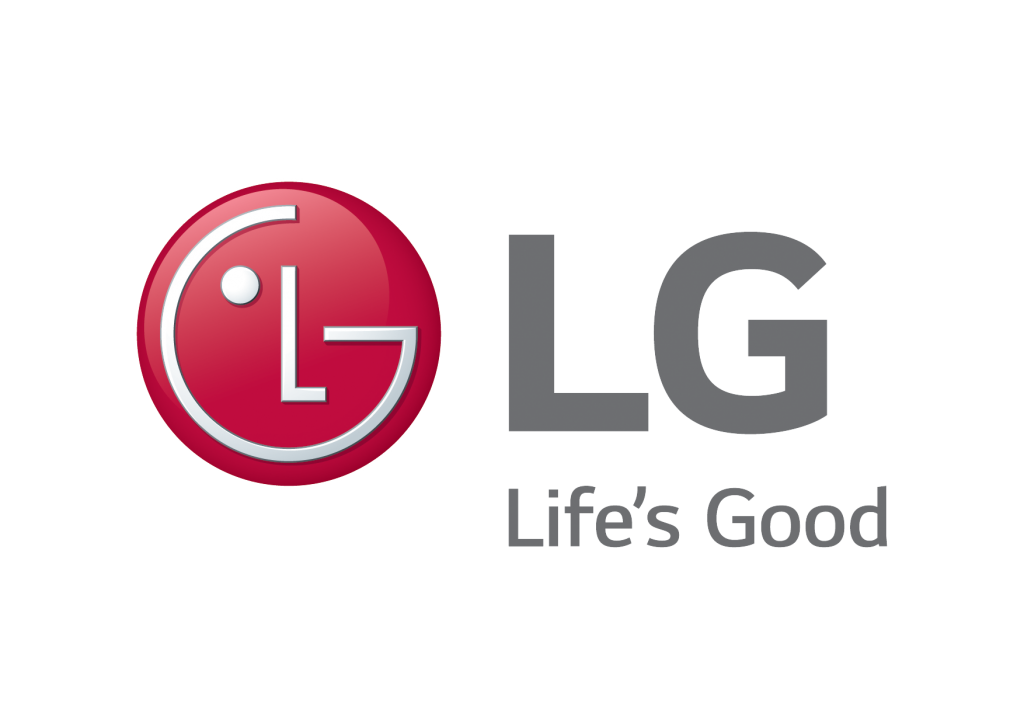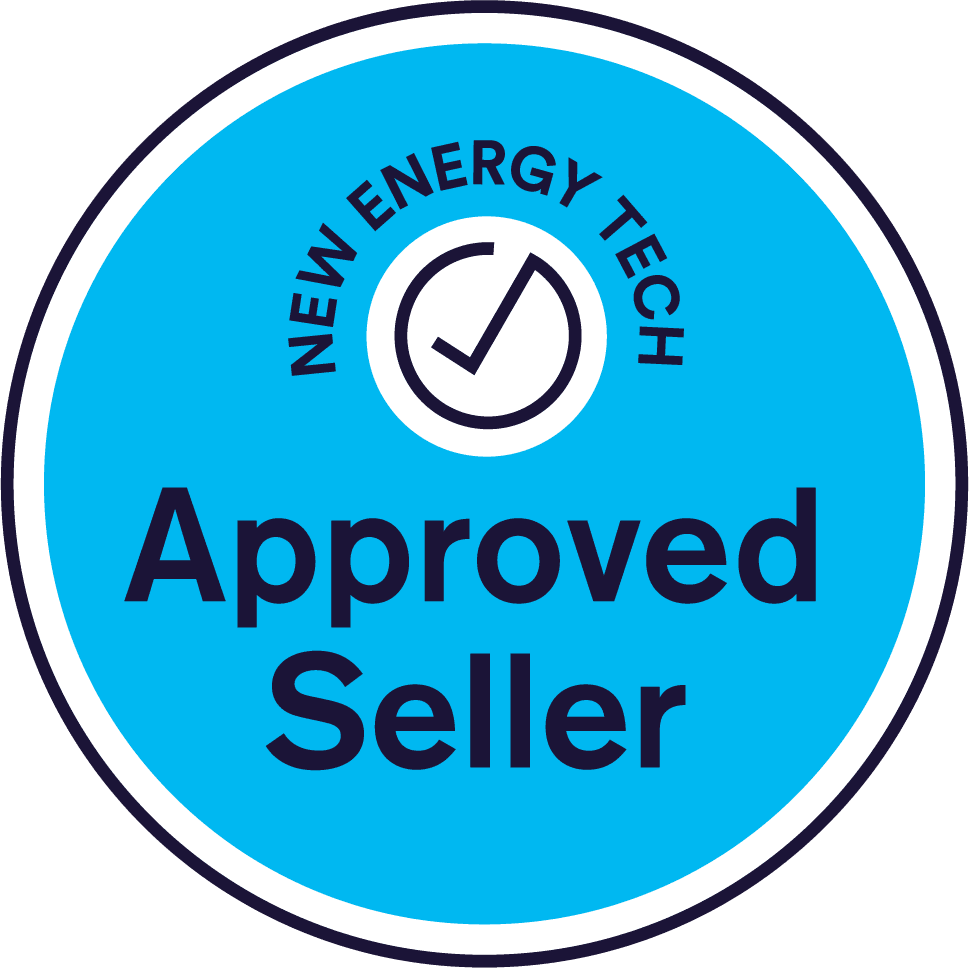LG Neon H Solar Panel Review
At GI Energy we can install any solar panel for your home or business. This means we are able to write honest reviews expressing our genuine opinion, without having to be biased due to holding stock of LG solar panels, or any other solar panel brand! This article details the opinion of our Business Development Director, who has worked in various roles from consultancy, business development and commercial project management in the PV industry since 2009.
Warranty and tech support today: 10
Warranty and tech support long-term: 9.5
Performance: 9.5
Price: 7.5
Value for money: 8.5
Total Rating: 9/10
LG have been involved in the solar industry since 1985 when they set up their first research and development team in South Korea. The overall company have been involved in electronics and chemicals since 1947. So, it is safe to say they have had a lot of practice in this field. Their latest solar panel is the LG Neon H – LG380N1C-E6 or LG385N1C-E6. This article covers the main pros and cons of this new LG solar panel and is written in easy to understand language.
At GI Energy, we have found the best way to review a solar panel is to look at three different aspects:
- Who is the manufacturer?
- How does the solar panel perform in the real world?
- How much does is cost / does it offer value for money?
So, lets take a closer look at the manufacturer:

LG have probably done my job for me here. I think it is safe to say we have all heard of LG? In fact, I am fairly confident 9/10 people reading this will have a LG appliance in their homes right now. They are best known for their TVs, fridges and washing machines. They also have a massive chemical division and manufacture batteries for various markets, including solar batteries. I would also gamble and say that almost everyone that has a LG appliance has has a good experience with it? I know personally I have had several LG TVs over the years and have only ever replaced them when I wanted something bigger and better, rather than due to a product failure. I also have a LG washing machine at home that I have had for 12-years now. We actually have a 32 inch LG TV here in our lunch room that was manufactured in 2012 which still works like new. Don’t get me wrong, the frame is pretty thick and it does look anywhere near as cool as the new LG TVs, but the picture and sound is still awesome!
The photos below show our TV in the lunch room. I have not loaded pictures of my washing machine at home because, well, no one wants to see my dirty washing I don’t think!
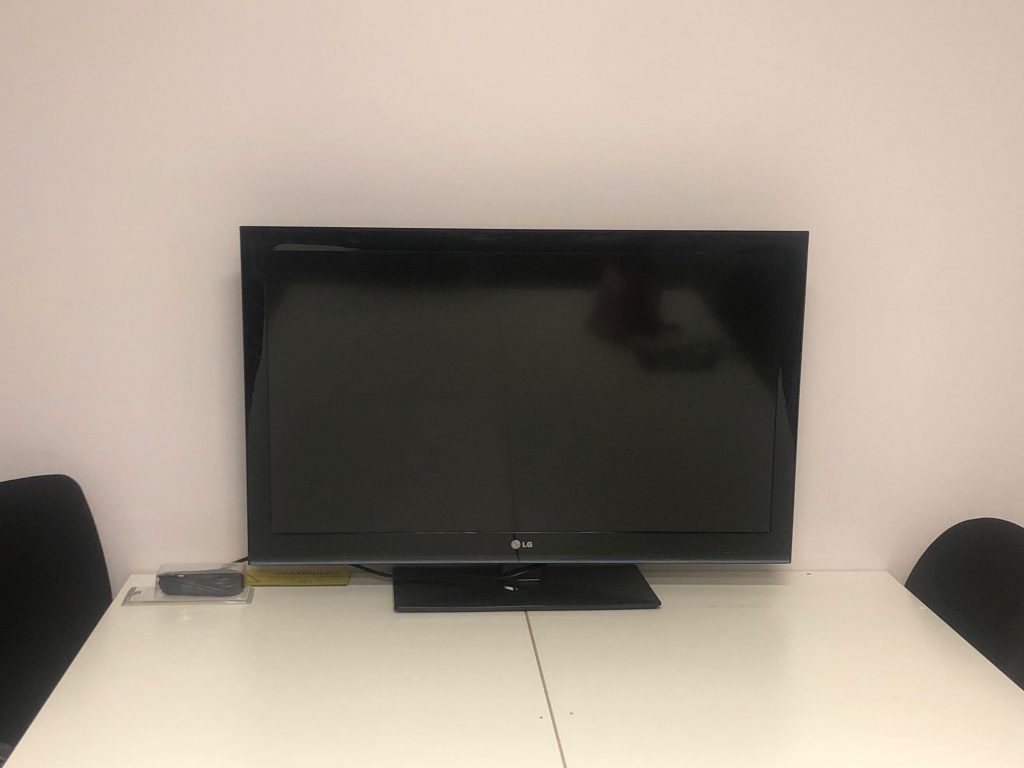
This really puts LG in a very unique place in the solar industry. There really is no other global brand name like LG that offers solar panels. Hyundai do make solar panels, but under a different division to the cars. Other brands like Phono Solar and Q Cells also have large Fortune 500 companies within the group but they are not a brand name like LG. Unless you are specially researching solar panels you probably haven’t heard of any of the above companies. You may be asking why does this matter though?
Well, solar panels are designed to last a very long time. In fact, all solar panels that are accredited here in Australia need to have a minimum of 10-year product warranties and 25-year performance warranties. In recent years, most companies have increased this to at least 12-year product warranties. The issue with this is, the solar industry is still a very young industry and most manufacturers are still younger than the 25-year warranty they offer. As with all new emerging industries, solar energy can be a volatile place to operate. This point is illustrated very well by the fact that 83% of solar panel manufacturers approved by the Clean Energy Council in 2013 are either no longer in business or no longer serving the Australian market. Bear in mind that the solar industry has been booming year on year globally, and in Australia we have seen record numbers of solar panels installed almost every year since 2013. If 83% of accredited manufacturers go out of business during these boom times, you have to ask what will happen to the rest of them when the demand globally starts to dip? This dip, by the way, is inevitable, as every time we install solar panels on a roof, we have one less customer to sell solar panels to. The natural demand for solar panels has to dip at some point.
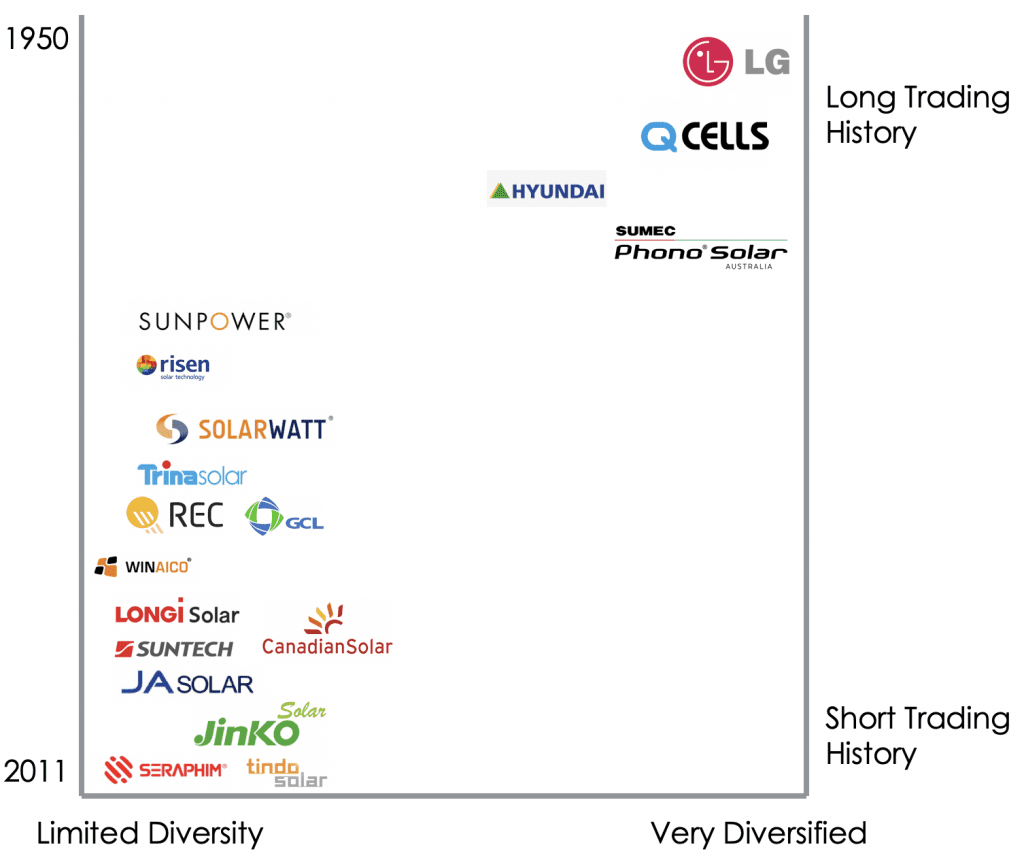
If you go through all our reviews you will see that we value a manufacturer that has a long trading history and a diversified overall business as these companies are better placed to stand the test of time and offer genuine support for warranties. As previously mentioned, LG have the longest trading history in the solar industry and they are the only company that has real, genuine brand presence.
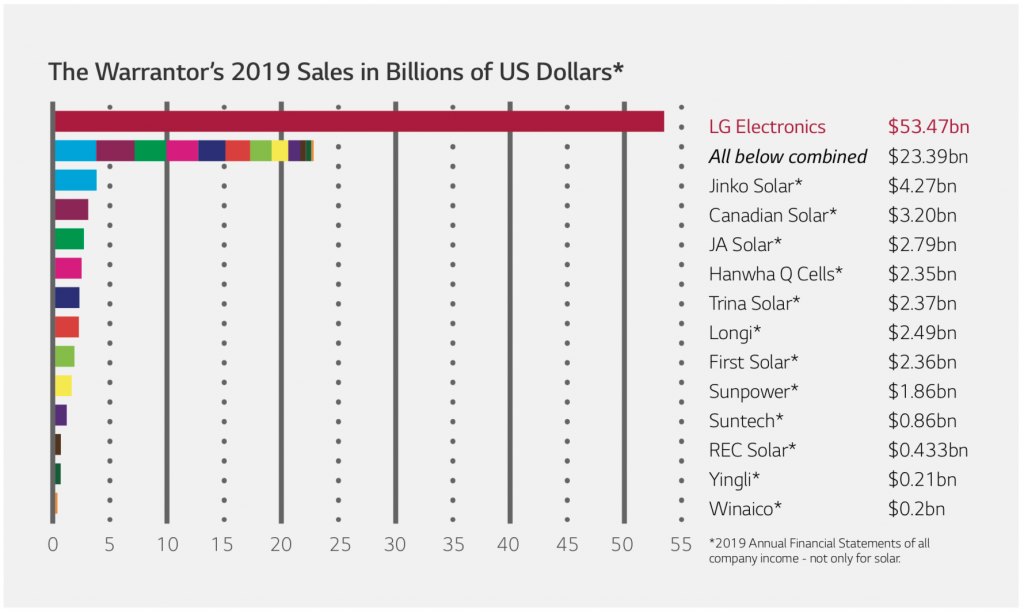
The chart above shows LGs annual sales compared to other major players in the solar industry. Jinko, for example, are the largest solar panel manufacturer for volume. You can see how LG sales dwarf Jinko on the chart. However, when people talk in billions, the scale is often lost because it is such a large number, we cannot really comprehend what it actually means. Lets play a little game to illustrate how big these numbers really are…
How long do you think it would take you to count to 1 million? If you counted a new number every second, how long do you think you would be counting for before you got to 1 million?
The answer is just under 12-days (11 days, 13 hours, 46 minutes, 40 seconds to be precise). Now, how long do you think it would take to count to 1 billion? If it takes you nearly 12 whole days to count to 1 million, have a think about how long it might take to get to 1 billion. For the sake of some suspense, I have put the answer at the bottom of this page, under the “useful links”. Have a think about it before you look.
Mind blown?
LG have annual sales of 53.47 billion USD, which is roughly 71.5 billion AUD.
This is over double all the other manufacturers on the chart combined! Hopefully this paints a picture of how seriously large the overall LG Electronics business is. LG have this humongous asset to protect and with it, extremely high brand value. So, even if they stop making solar panels and the 83% that are already out of business turns into 99% in the next decade, you can be pretty sure LG are still going to honour your warranty, because they won’t want to lose a potential customer for one of their fridges or TVs!
So, how do the LG Neon H solar panels perform in the real world?
LG have always made very good solar panels and have a very well respected brand name. This point is illustrated by the fact that they have won the EUPD Research Award for top brand PV in 2016, 17, 18, 19, 20 and 21. They have also won the Australian Readers Digest award for most trusted brand in 2020 and 2021. And they are three-time winners of the Inter Solar award for best solar panel. Additionally, they ranked as having the number 1 panel in Australia by Choice Magazine in an independent test by CSIRO.
The LG Neon H panel specifically, is very new but ticks all the same boxes the previous that the Neon panels have in the past. So, why do they perform so well? The high performance is largely due to LG using a very efficient N-Type cell, instead of the cheaper and more popular P-Type.
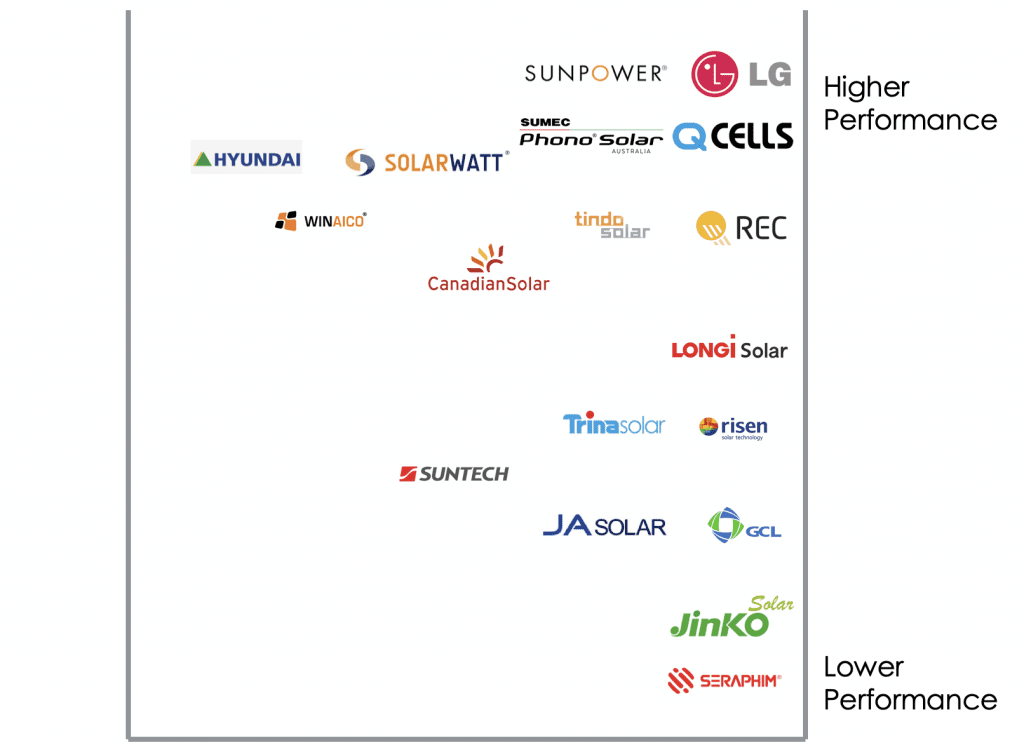
Whats the difference between a P-Type and N-Type cell?
I don’t want to get really scientific here so lets keep this simple and interesting:
- Solar panels are made of a series of cells.
- These cells are made of silicon.
- This silicon is doped with chemicals which helps with energy production.
- A P-type cell is doped with different chemicals than N-Type, which means the P-Type cell is positively charged and the N-Type cell is negatively charged.
- A N-Type cell is more efficient by nature and will also degrade less over time.
The first ever solar cell made was a N-Type cell, but due to demand for solar cells in space, P-Type cells were produced more because they offer better protection from space radiation. This is where all the initial money went for R&D because this was the biggest need for solar cells back then. Because all the money and attention went into developing P-Type cells, they naturally became cheaper and more widely used.
However, the N-Type cell is a much more efficient way of producing energy. Because the main focus for most solar panel manufactures has been driving cost down, the continuation of P-Type cells has occurred. Essentially, the N-type cell (which basically means negatively charged cell) is a more expensive but more efficient type of solar cell that you only find in a very small handful of solar panels. So, unless you are installing solar panels in space and are worried about the effects of space radiation effecting the performance, you are better off with N-Type cells.
There are a few more manufacturers that use N-Type cells these days but this is fairly recent and LG have been using N-Type cells since 2014. We expect this trend to continue and more manufacturers to start using N-Type cells in the next few years.
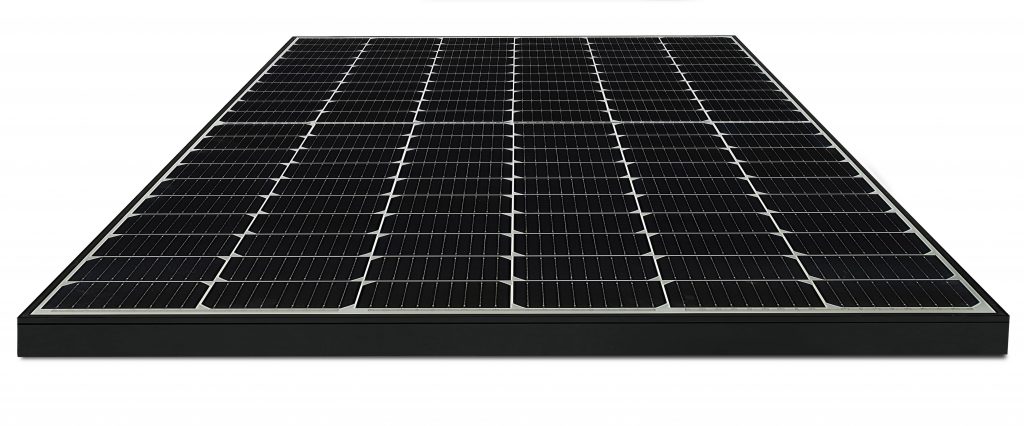
Aside from using N-Type cells LG also have 9 bus bars through their panels. What is a bus bar? It is basically the conductor that takes your lovely solar energy through your panel and into the cables that eventually end up powering your appliances. Most panels have 5 or 6 bus bars which is less efficient. Imagine a 5 lane highway packed with cars. Now imagine that same highway magically opened up to 9 whole lanes. What would happen to the flow of traffic? It would speed up and cars would move way more efficiently. This is what happens with more bus bars. When your solar panels are working close to peak performance (which in our amazing Australian climate, happens more than most places in the world) you will experience losses due to resistance in the bus bars running through your solar panel. With more bus bars, the resistance is lower and the performance increases.

The LG Neon H panel also have a very good temperature coefficiency rating. A solar panel is tested, and rated, at 25º C. For every degree over 25c the solar panel will degrade by whatever the temperature coefficiency rating is. For example, if the temperature on the solar panel was 40º C, that would be 15º C above testing conditions. So, this would mean the panel would lose 15 multiplied by whatever the efficiency rating was.
For the sake of easy maths, let’s assume the solar panel has a temperature coefficiency rating of 1%. This would mean the solar panel would be 15% less efficiency in 40º C heat, when compared to 25º C heat (because we are 15 degrees higher than test conditions, and the rating is 1%. So, 15 x 1 = 15% less efficient). So, this would mean you would lose 15% of your solar production when the temperature was 40º C on your roof.
Luckily for us, no solar panels have a temperature coefficient rating as low a 1%. But, the lower the rating, the better the results will be long-term.
The LG Neon H temperature coefficiency rating is only 0.33%. This is VERY low. Don’t forget, your solar panels should have a 25-year lifespan, and they sit up on your roof in the hot sun all day every day. With a poor temperature coefficient rating, you will lose a significant amount of useable energy over the years.
How about price?
OK, so if you have read this whole review so far, you are probably wondering why any one ever installs anything else aside from LG? The simple answer here is – they are not going to suit every customer as they are not the cheapest product on the market. Unfortunately, the solar industry seems to have focused all of its attention to making things as cheap as possible. This goes for solar panel manufacturers, installers and retailers as well. Every advert you see is advertising an entry level product at the cheapest possible cost. Manufacturers of solar panels typically pour all their research and development budget into lowering the cost of production. LG are different, they have focused their attention on how to make things better. This means the price point is higher than a lot of other solar panels on the market.
They are not the only ones who have done this, but there are not many! Sunpower are probably the only other solar panel that are a long-term genuine contender with LG for consistently manufacturing very high performing solar panels. And the price point for Sunpower is pretty comparable to LG too. The big difference here is LG bring the big brand name and security to the table, Sunpower do not. So, when you are looking at the actual value of a solar panel, rather than just the cost, it is difficult to find an argument that supports purchasing Sunpower over LG.
Additionally, the LG Neon H is also priced slightly better than the previous LG Neon panel, which makes the long-term ownership look more attractive again.
Summary:
LG have always made great solar panels. They do not really have any direct competitors because there are no other solar panels that offer the same brand name coupled with high performance.
Not everyone is going to buy LG Neon H panels as they are more expensive than most other solar panels. For those who really value performance and reliability with support, they are pretty difficult to look past. If you are going to buy LG Neon H panels, make sure you pair them with a good quality inverter, good quality electrical equipment and make sure you use a good quality solar retailer! It is not just manufacturers who have consistently gone out of business in this industry. Solar retailers that are focused purely on price are a dime a dozen these days. Solar retailers with a solid, long trading history are very difficult to find.
Here are some links worth checking out:
The difference between a good quality and poor quality installation
To count to 1 billion, it would take 31.7 years. But since it takes more than a second to actually say some of the numbers in the sequence, it may take upwards of 60 years to complete.

